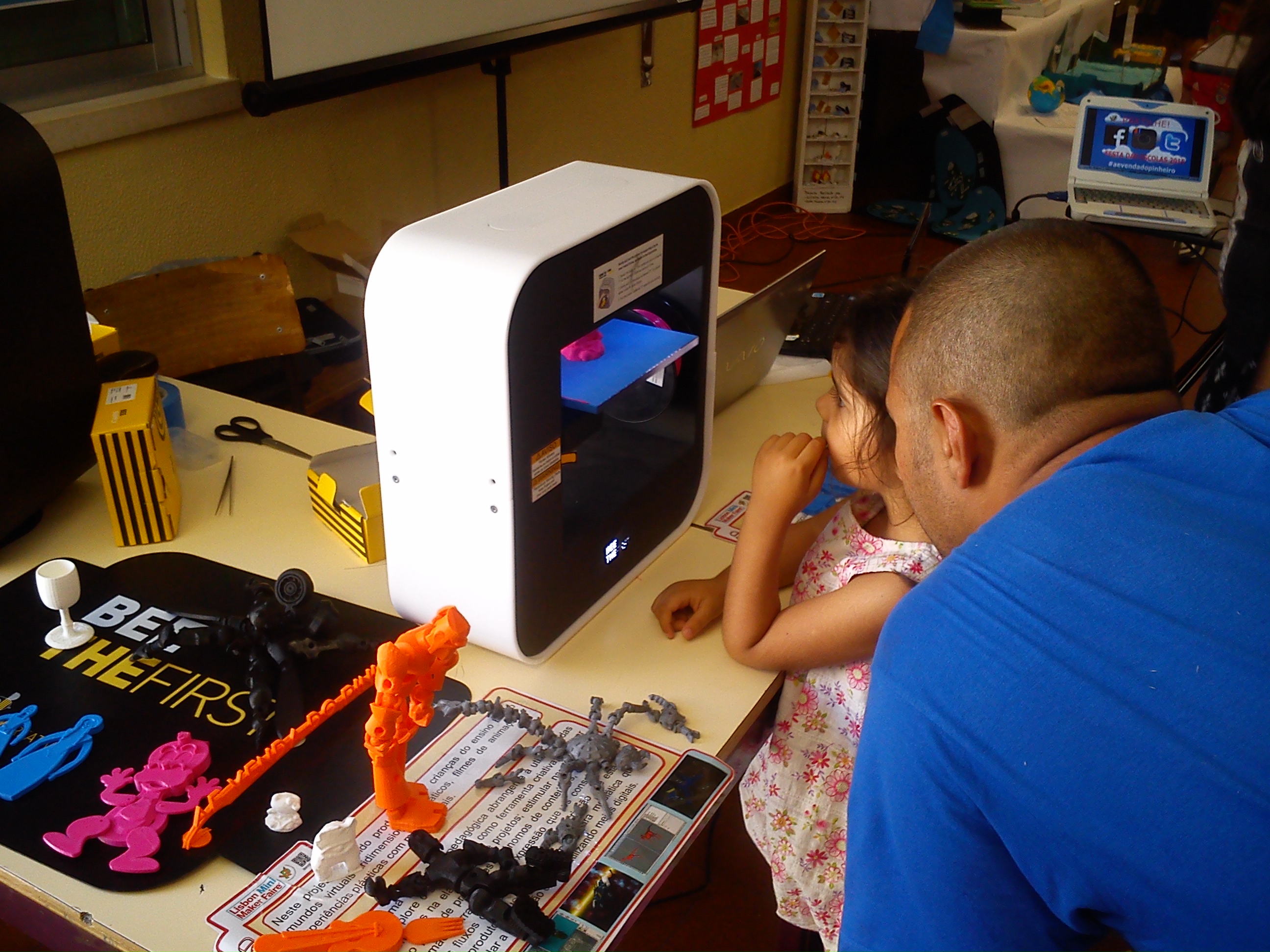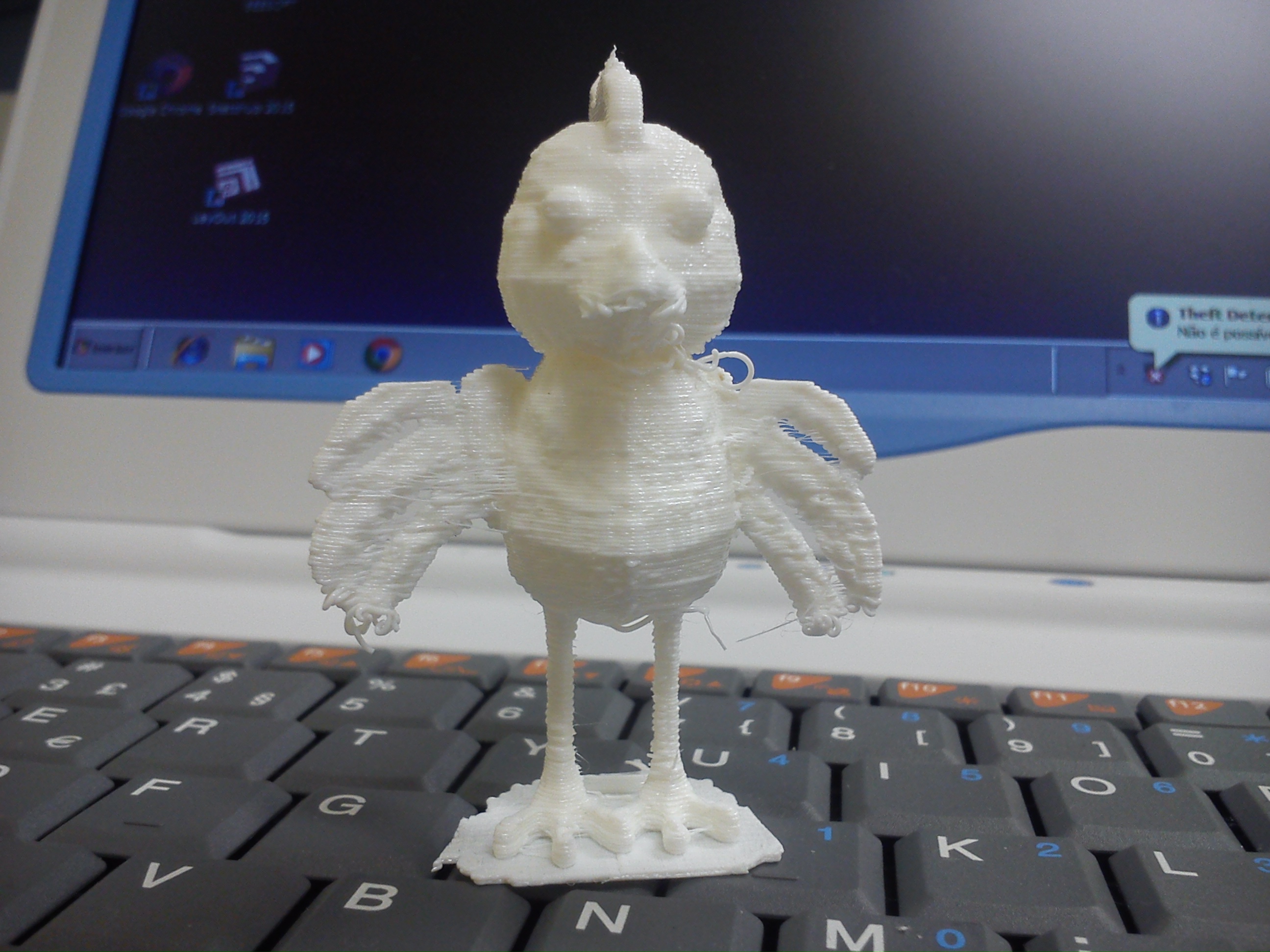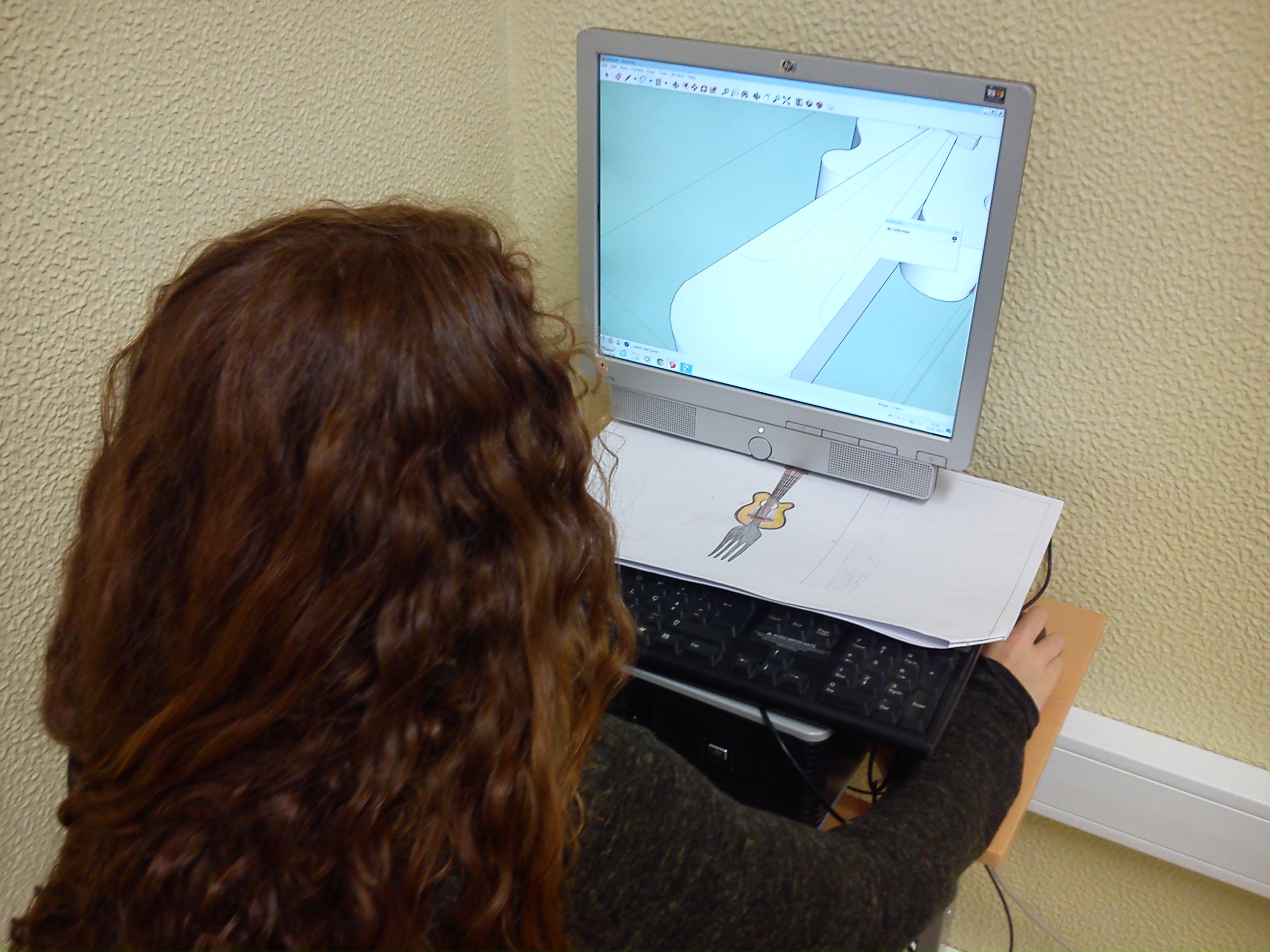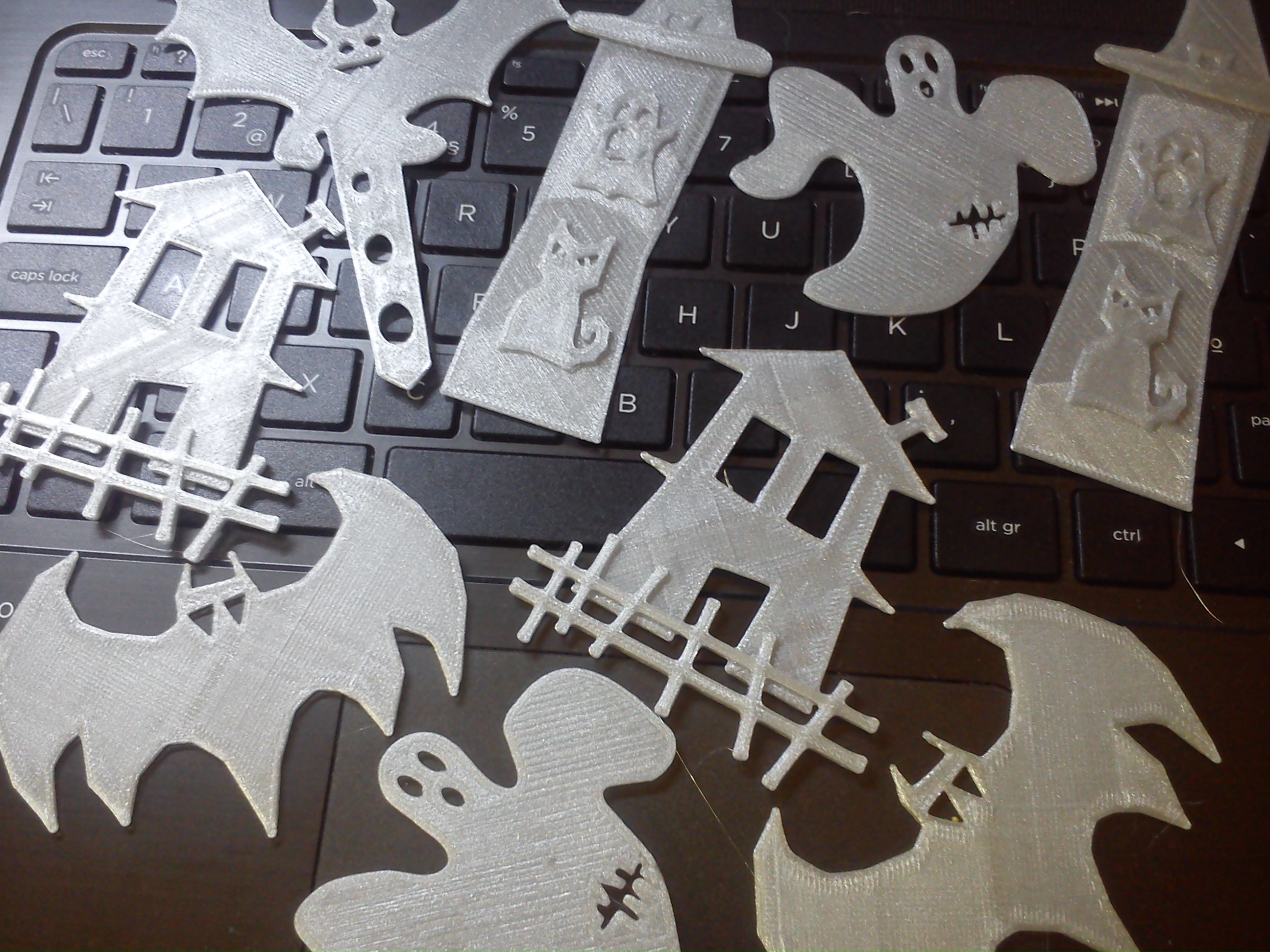

First step: ignite curiosity
Today, 3D printing is perceived as a transformative technology which is leaving its mark on society. Although still seen as a novelty by the media, it is today an integral part of manufacturing processes in creative and advanced technology industries, such as, for example, aviation or engineering, who resort to the new manufacturing capabilities and rapid prototyping enabled by a technology that promises to change the paradigm of industrial manufacturing. A change that is already happening in leading industries, but is also reflected in the numerous businesses that are emerging on the consumer domain, such as desktop 3D printer manufacturers, or stores specializing in filament, accessories and 3D printing services that bring this technology for all. Also of note is the explosion of Maker culture, which enhanced by open source hardware has been fundamentally beneficial in the evolution and dissemination of addictive manufacture technologies.
3D printing is already present in our daily lives, conceptually in the popular consciousness fuelled by the media, and in products and services that we often do not realize that were created using these technologies. In a very obvious example, sets and props for the Special Effects in some of the most popular films. In less obvious ones, structural architectural elements, airplane parts or medical models that help surgeons to plan complex operations. Slowly but steadily 3D printing is also coming into our homes and jobs. There are more and more individual users who try and find their own personal uses for RepRaps, Makerbots, beethefirsts and other fused filament printers in commercial and artistic personal projects.
Classrooms are often the last strongholds for penetration of new technologies. The current use of personal computers is only now becoming a daily reality in Portuguese schools. For mobile technologies the outlook is worse. If socially, on a daily basis, tablets and smart phones have become productivity and communication tools, the vast majority of schools still dismiss them as distracting gadgets, notwithstanding some academic experiments that research ways of bringing their communication and productivity gains into educational contexts.
This culture of resistance to new technologies in school results from a powerful combination of several factors. Teachers can be in general conservative and wary of new technologies. Comfortable with the results obtained by traditional methods, they are understandably wary of technological experiments whose results and pedagogical outcomes they cannot anticipate. Other factors include lack of ideas to spark technology use beyond the novelty factor or as a digital form of replicating the work processes of analog learning. Finally, and fundamentally, investment costs and equipment needs. Equipping schools with hardware suitable to their needs is costly. Investments, when they happen, focus on the hardware and generally leave aside the teacher training component. I have personal experience with tracking and implementing projects of this kind in the school where I work, usually in top down, ministerial level, on regional and national approaches. These experiences taught me a hard lesson. Much of the digital technology that is delivered to awaken innovative pedagogies ends up collecting dust in storage rooms or used in very elementary ways. The main flaw in this process is in the ideas. We can give teachers every desirable computer, interactive whiteboard, projector our any other digital tool, but if teachers do not have a conception of how to take advantage of it, they will not use them efficiently. Training helps fighting this problem, as well as sharing hands on, in the field experiences in communities of practice and internet forums, but this is a slow process.
Considering this set of challenging factors, perhaps that's why Gartner, in its Hype Cycle 2015 on 3D printing was pessimistic when classifying 3D printing in the classroom. The Gartner Hype Cycles welcome describe in a very interesting way the trajectory of emerging technologies in the public consciousness, from the time they exit the labs until their normalization in everyday life. One of their most curious elements of is what they call the peak of expectations, that moment we all felt when a particular technology surprises and awakens in us the desire to have it, but we do not yet know very well how we will use. From that peak the interest decays abruptly, but in the medium term, in what Gartner's analysts describe as the productivity plateau, technologies mature and integrated in daily life. Forecasts by Gartner for Classroom 3D Printing, 3D printing in educational contexts, are not encouraging. The interest is growing, but approaching the peak of expectations which inevitably leads to the denial of its usefulness. They predict that the full implementation of this technology in the educational context is in a horizon beyond ten years time.
This may be a pessimistic vision, but the new pedagogical possibilities brought by 3D printing in school are real. All over the world, teachers and researchers are increasingly testing formal and informal projects that bring 3D printing to the classroom. These projects are crucial, being the first steps that will begin to enable children to contact with this technology. Its main importance lies in the space of ideas. These new projects seek practical activities that take advantage of 3D printing using approaches and methodologies that are integrated into the curriculum and make it into a tool used by children. In doing so, they inspire and generate more ideas (https://instagram.com/morphiapp/).

Kids and grownups alike marvel before 3D printers.
What can our students learn through 3D printing? On a basic level, to demystify the technology, coming into contact with hardware that they know from seeing it on the internet or television but did not suspect that it may be closer to them than they think. This marvelling before the aesthetics of the machine, eying with delight while the precise movements of the extruder build an object layer by layer is an alluring look that I have often seen in children and grownups, either in the classroom or in workshops and demonstrations. But it's still a first step, not the most relevant in pedagogical terms and does not bring anything new to education. It is the equivalent of talking extensively about computers or the Internet, showing them but not allowing pupils to use it.
Designing activities that put pedagogical focus on content creation by students is crucial for an effective use of technology in education, and 3D printing sticks to this principle. More important and relevant than looking at objects, mechanisms, or interactive representations, is to be able to directly create and work with them. In other words, to shift the focus from a passive learning stance to an active, creative, hands-on that research shows is more effective to foster knowledge retention and enables more dynamic abilities in students.

This cute bird is one of the first 3D printed objects designed by our students, a 13 year old girl.
Documented uses of 3D printing, studied either in academic contexts or by innovative teachers who are experimenting and breaking intervention paths at school, involve different aspects. In artistic fields, 3D printing can be used as creation tool for learning artistic techniques. In other areas, one of the first uses is bringing tangibility to ease understanding of abstract concepts such as complex geometric shapes or tessellations in mathematics, or molecular structures in the sciences. In technological areas 3D printers are increasingly used to create mechanisms or elements for Arduino controlled robots. The potential for integration in curricular activities is enormous. Listing all possible uses would be an exhausting and endless task. Every day, somewhere, there is one more teacher in her classroom conceiving a new activity that takes advantage of 3D printing. Sometimes, in unsuspecting levels of education, as shown by elementary school teachers challenging their very young students to model in 3D to print the result (https://instagram.com/p/4PtiIzMKSy/).
So, how can we take advantage of 3D printing to spark learning and creativity? Online repositories of 3D printable content are a good starting point, but if we really want to awaken the potential of these technologies in our students we have to teach them how to model in 3D. In doing so we are teaching them not only the tools that let them create to print in 3D, but also work and design processes that shape their thinking. And, crucially, giving them tools to enhance creativity.
In addition to the new learning capabilities brought about by its curricular integration, 3D printing brings to children, our students, another important ability. To make the most of this technology, one must go beyond printing pre-designed parts and models discovered in online repositories. One has to create, and for that it's necessary to conceive, design, explore solutions, draft, and essentially learn to model in 3D. This is where things become even more interesting. By bringing 3D printing to the classroom, we encourage our students to learn modelling methodologies and workflows, acquire technical knowledge and use software that, in most cases, would not be within their horizons. We can intuit the potential that these factors have on preparing children to face the challenges of STEM areas (Science, Technology, Engineering, Mathematics). I remember, during the Lisbon Mini Maker Faire in 2014, the words of an engineer observing some work done by my students between the ages of nine and fourteen using 3D modelling technologies in the classroom: It is very important, he said, that children learn how to use 3D so that later they more easily able to learn the work processes in engineering. Going beyond specific fields, our goal is not to train little engineers or animators and 3D modellers, but rather providing our students with some comprehensive basic knowledge that will allow them further development later in life on whichever path they choose.
That being said, we are working with young students. Therefore, we have to focus on easy to use tools, that enable them to focus on design and creativity and not on navigating cumbersome or complex user interfaces and failing to learn difficult modelling methodologies. There is a growing number of 3D modelling applications that are precise but easy to use. We have previous experience in teaching 3D modelling and animation to young children, so it was easy to use it to speed up application choices for 3D printing projects. From the large number of 3d modelling software, we are focusing on two that are easy to integrate in class, learn and rapidly create models: Sketchup and Tinkercad.

Learning 3D modelling in Sketchup to create physibles.
Sketchup is, I suspect, quite well known by readers of this magazine. Sketchup is complex, precise, multi-purpose, and so intuitive that children need only some quick lessons to start using it. That speed always amazes me. Being a professional-level software, it also introduces children to the wider world of modelling in architecture and engineering, giving them a glimpse and early start that might be useful for their future career choices. However, Sketchup is also problematic when modelling for 3D printing, which requires non-manifold, watertight meshes. One essential technique while modelling in Sketchup for 3D printing is using the outer shell tool to combine solid groups. Simple pieces are easy to model, but more complex ones sometimes require extensive corrections either in Sketchup or using STL validation tools such as netfabb, Make Printable or Microsoft 3D Builder. It is advisable to install Sketchup's export to STL plug-in, since converting to STL from the collada format tends to disrupt precise measurements. My students are using Sketchup in some cool 3D printing projects were they redesign kitchen utensils and traditional toys.

Celebrating Halloween... with 3D Printing. An easy project that enables entire classes to learn, design and 3D Print.
Another promising tool is the 3D modelling webapp Tinkercad. Runs on WebGL enabled browsers, it's very easy to use and far more powerful than at first glance. Tinkercad uses primitive modelling techniques to create complex shapes combining primitives with Boolean operations, and is very efficient in generating solid and watertight STL meshes. Tinkercad also goes beyond primitive modelling, allowing import of SVG and STL files. An SVG path can be easily extruded into a 3D shape (Inkscape is our tool of choice for this). STL import is incredibly useful. For example, I was able to import a non-watertight mesh created in Sketchup, a curvy shape that I was unable to keep solid in Sketchup, into Tinkercad and combining it with a primitive, generate a printable STL. Tinkercad use with my pupils is just beginning. At the beginning of the school year they were challenged to create personalized bookmarks from drawings traced using Inkscape. The look of surprise and delight on the children's faces when holding 3D printed objects that they designed is marvellous. These students never suspected, upon starting my ICT class, that in a few weeks they would take home 3D printed stuff designed by them in class.
Mobile apps are another interesting platform for 3D modelling. Android tablets have some useful apps, such as SubDivFormer, a subdivision modeller, and 123D Catch, Autodesk's 3D scanning app. iOS tablets have a wider range of modelling apps. We're currently looking into Morphi, an easy to use 3D modelling app designed for children. It's an impressive app, and its makers do great efforts in showing its usability in STEM education, but at the time of my writing it's still not available on Android. Still, given the lower price of tablets and its large availability in our students, we feel that using them would enhance 3D printing activities.
3D printing in educational contexts, combined with 3D modelling and structured activities both within the curriculum and in other aspects, challenges students to be consciously creative. Teachers need research, design ideas and solutions that ground creativity in curricular and technical knowledge to take full advantage of this promising technology. 3D printing is the next frontier of education. Classroom integration will not be easy to achieve, but the path promises to be very interesting, and the potential is enormous. At the school where I work, Agrupamento de Escolas Venda do Pinheiro (http://aevp.net/), in rural surroundings on the outskirts of Lisbon, Portugal, we risked acquiring a beethefirst 3D printer, produced by the Portuguese company BeeveryCreative. The surprise and fascination are constant, and every day we discover a new idea, a new project, a new way to put this tool in the hands of students. Constantly we share our experience in academic events, technology fairs and on our website, ICT in 3D (http://3dalpha.blogspot.pt/). Some of us have already taken the first steps, and will not give up until we are a crowd. Care to join us in bringing 3D printing to schools?
You're a teacher and want to start 3D printing with your students? Here are some links to get you started:
Morphi http://www.morphiapp.com/ : A cool 3D modelling app for iOS designed for children. Their creators are very focused on STEM education.
Tinkercad: an easy to use, yet powerful and precise web-based 3D modeller. https://www.tinkercad.com/
Makerbot in the Classroom: Looking for curriculum ideas and strategies for classroom 3D printing? Makerbot designed this interesting curriculum. http://pages.makerbot.com/download-makerbot-in-the-classroom.html
El Patrimonio Escultorico en el Aula: Focused on arts education, an interesting source of ideas for 3D printing activities. https://www.academia.edu/11954206/El_Patrimonio_Escult%C3%B3rico_en_el_aula
Invent to Learn Guide to 3D Printing in the Classroom: Some very practical ideas for 3D printing projects http://inventtolearn.com/3d-printing-in-the-classroom/
ICT in 3D: our website, where we share ideas, articles and classroom experiences in 3D modelling and 3D printing at school http://3dalpha.blogspot.pt/
- Cover Story
-
 SketchUp Can Help You Win Interior..
SketchUp Can Help You Win Interior.. -
 Best Laptops for SketchUp
Best Laptops for SketchUp -
 How to Resize Textures and Materials..
How to Resize Textures and Materials.. -
 Discovering SketchUp 2020
Discovering SketchUp 2020 -
 Line Rendering with SketchUp and VRay
Line Rendering with SketchUp and VRay -
 Pushing The Boundary with architectural
Pushing The Boundary with architectural -
 Trimble Visiting Professionals Program
Trimble Visiting Professionals Program -
 Diagonal Tile Planning in SketchUp
Diagonal Tile Planning in SketchUp -
 Highlights of some amazing 3D Printed
Highlights of some amazing 3D Printed -
 Review of a new SketchUp Guide
Review of a new SketchUp Guide
- Sketchup Resources
-
 SKP for iphone/ipad
SKP for iphone/ipad -
 SKP for terrain modeling
SKP for terrain modeling -
 Pool Water In Vray Sketchup
Pool Water In Vray Sketchup -
 Rendering Optimization In Vray Sketchup
Rendering Optimization In Vray Sketchup -
 Background Modification In sketchup
Background Modification In sketchup -
 Grass Making with sketchup fur plugin
Grass Making with sketchup fur plugin -
 Landscape designing in Sketchup
Landscape designing in Sketchup -
 Apply styles with sketchup
Apply styles with sketchup -
 Bedroom Making with sketchup
Bedroom Making with sketchup -
 Review of Rendering Software
Review of Rendering Software -
 Enhancing rendering for 3d modeling
Enhancing rendering for 3d modeling -
 The combination of sketchup
The combination of sketchup -
 Exterior Night Scene rendering with vray
Exterior Night Scene rendering with vray






